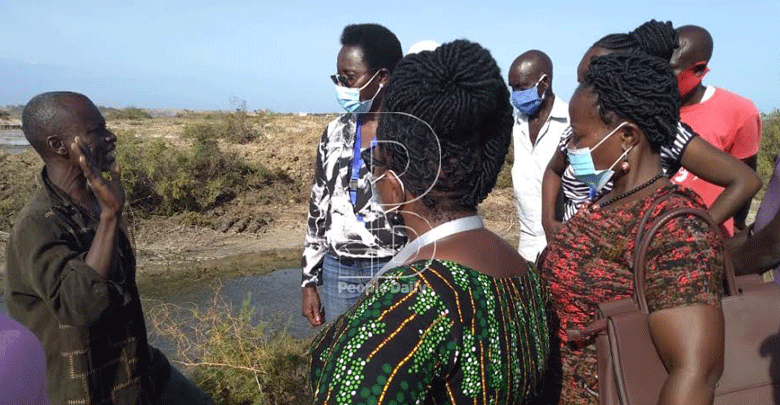Dormant brine shrimp eggs excite fish hatchery farmers
By Jasmine Atieno, February 9, 2021
Jasmine Atieno @sparkleMine
With the dwindling fish catches in natural waters, including the ocean, focus has shifted to aquaculture as the only alternative for provision of sufficient fish for the growing population in East Africa.
So far, freshwater aquaculture has dominated the fish production industry with over 80 per cent of fish produced being tilapia and catfish.
However, mariculture is struggling to take off due to scarcity of quality and sufficient fish seeds.
Researchers in Maseno University led by Dr Erick Ogello and Kenya Marine and Fisheries Research Institute (KMFRI), led by Morine Mukami and Dr Mary Opiyo have discovered ways of utilisation of brine shrimp (Artemia sp) to promote marine aquaculture production.
Artemia is an aquatic crustacean that thrives in salty habitats, such as salty lakes, coastal lagoons and evaporation salt works.
They are small crustaceans usually with high protein level, and have been found to be the best food for baby fish commonly known as fry.
“We are honoured to be part of this collaboration between the university and the other stakes because this means a bigger scientific outcome,” said Maseno University Vice Chancellor, Prof Julius Nyabundi.

When food is scarce and salinity is high, artemia produces hard shelled eggs known as cysts, and in favourable conditions they hatch young ones known as nauplii.
These cysts are able to withstand near-total dehydration, losing more than 97 per cent of their water content.
All their life processes stop and they enter a state of suspended animation called anhydrobiosis, a bizarre stopover between life and death.
The cyst can last for over 30 years before hatching. Artemia has been used globally as food for larval fish to improve fish larviculture production in hatcheries and ensure high production of quality larval fish seeds.
To feed fish fry (recently hatched fish), the cysts are incubated in aerated sea water with enough light and hatch into nauplii after 24 hours.
Valuable cysts
The nauplii can as well be used as a protein source to formulate aqua-feed for grow-out fish.
In the salt industry, Artemia, which is a filter feeder (meaning it eats everything within the water column) feeds on algae thus cleaning the water.
This eventually enhances the quality and quantity of salt produced thus lowering the cost of salt production.
Artemia produces cysts that are very valuable in the international market, currently at USD 60 (Sh6,560) per kilogramme.
In other countries such as China and Vietnam, Artemia has been used to improve the livelihood of local people, hence delivering people from poverty and malnutrition.
Fortunately, an Artemia population has existed in the Kenyan and Tanzanian coast for more than three decades, thanks to the Kenyan-Belgium Project, implemented by KMFRI and University of Ghent in Belgium.
However, the Artemia in Kenya has not been adequately exploited for local aquaculture production.
Currently, artemia cysts are only used by few hatcheries in East Africa and are expensive since they are imported from Asia, America or Europe.
“It is quite unfortunate that this organism was introduced in Kenya and Vietnam at the same time, but Kenya has still remained behind,” shares KMFRI Marine Scientist, Maureen Mukami.
“We recently imported a machine from Vietnam worth Sh5million for cleaning the Artemia cyst.
This will enable us to get a higher quality cyst. Although we are only selling to the local market, we are looking forward to exporting once we get more cysts,” she added.
In Kenya a kilo of artemia costs Sh7,000. It is against this backdrop that a two-year project titled Optimizing Artemia Production Technology for Sustainable Aquaculture Development, Food Security and Economic Growth for the East African Coastal Communities is being rolled out.
The Marine Science for Management project is funded by Western Indian Ocean Marine Science Association with lead implementers being Maseno University in partnership with Kenya Marine and Fisheries Research Institute, Tanzania Fisheries Research Institute and University of Gothenburg, Sweden.
“The launch of this project in the coast region is to encourage and promote aquaculture.
We will train farmers on how to produce artemia, and also sensitise them on the value chain,” Ogello says.